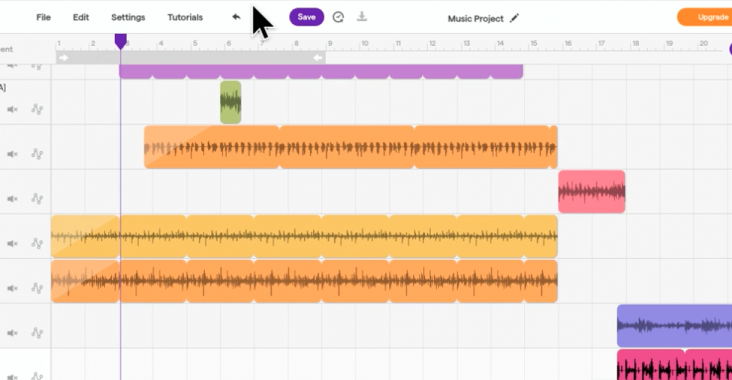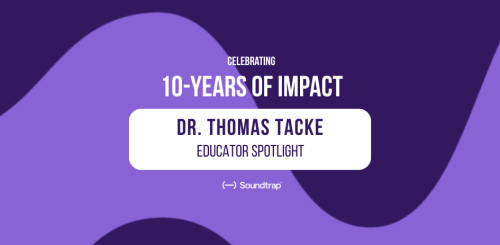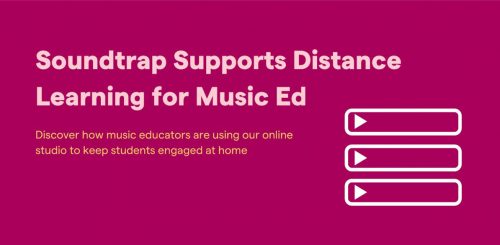
Inspiring Students in Music Classrooms
July 27, 2018Education is changing.
Not only is the stuff we are required to teach our students changing, but the ways in which we are asked to deliver these curricula are morphing, too.
As teachers, we are no longer (nor should we have ever been) the keepers of facts and the purveyors of “knowledge.” As many great contemporary educators, including @gcouros, @burgessdave, @Angela_Watson, and @cultofpedagogy, remind us our job as educators is to teach students where to find facts, how to determine the bias in those facts, and to create their own knowledge and understanding of those facts while navigating the rapidly evolving and increasingly borderless world we live in.
As a music teacher, there are certain facts that will not change:
-middle C will always be the first ledger line below the treble staff
-a quarter note will always be one-quarter of the value of a whole note, no matter the time signature
-a metronome set to a tempo of 120 bpm will always sound two beats per second
What is changing is the ways in which I inspire my students to access these facts and turn them into pieces of information contained in their knowledge base.
I (and I’m sure many other music educators) have struggled for last few years to:
- make traditional music education relevant to students who are “never gonna play the clarinet in real life”
- find ways to assess instrumental performance without negatively impacting students’ sensibilities (“I don’t want to play in front of people”) or compromising the integrity of the performance (listening to students play individually while the whole class practices/performs at the same time – can you say “chaos!?!”)
- find accessible software for students to create their own music – no one wants to notate using pencil/paper anymore!
Enter Soundtrap.
Aside from being a robust online audio recording studio, I was hooked, line and sinker when I witnessed the following: two students were working together on a Soundtrap project (one was at school, one away sick at home). On their own – without me having introduced the collaboration feature within Soundtrap – the student in class worked with the at-home student on their project during class time. It was pure student agency gold. (See below picture!)
Some ways I’ve used Soundtrap in my Music classroom:
- Students used loops to show understanding of ABA (or other) Form.
- Students used the Patterns BeatMaker to show understanding of subdividing 4/4 time.
- Students used a combination of loops and samples to “create something to add to a playlist”.
- Students recorded themselves playing instruments for both self and teacher evaluation.
- I recorded my Concert Band playing at different points in the school year as an audio portfolio of their progress.
- I created accompaniment tracks to back a scene from a movie to ignite discussion about the mood in music.
Some ways I have used Soundtrap with colleagues in teaching/assessing core subjects:
- Students used I Am Canadian video as inspiration to create their own Canada Is… poem – written as a cross-curricular assignment for Language and Social Studies classes, They turned the poem into a song celebrating Canada during the 2018 Winter Olympics by creating appropriate backing music. This example was created during class time (hence, background noise) using Screencastify to record the audio and the visual of their lyrics.
- Students used loops, microphone, and self-created “sound effects” to create audiobook versions of pictures books chosen by younger reading buddies.
- Students used loops, microphone, synth, and the Patterns BeatMaker to create podcasts for digital versions of persuasive writing.
Ways I WILL use Soundtrap in future Music classes:
- mini recording studios, including insulated boxes (reducing background noises heard above), microphones, and MIDI keyboards, for students to create their own soundtracks to cross-curricular video projects
- MIDI keyboard will record independent tracks from band scores so students can isolate their parts and listen in a play-along style to improve practice time
- MIDI keyboards and Patterns BeatMaker for students to create accompaniment to practice their instrument to
- use collaboration feature to “pen pal” with students from another school to create songs OR evaluate each other’s performance of a song and provide feedback without meeting in person
- any others ideas? SHARE! @mspindar
I ran two half-day workshops introducing Soundtrap to colleagues across my board. Teachers from both the elementary and high school panels participated, many of them non-music teachers. I sought feedback from session participants and 100% of the respondents supported our board acquiring licenses to use within our schools. It was incredible to witness the same enthusiasm for this tool that I had experienced almost from day one.
One of the common threads among the music teachers was that band programs are suffering because students don’t want to play instruments anymore; that by introducing students to a DAW (digital audio workstation) like Soundtrap, we are digging our own graves. I’d like to argue that the opposite can be true; that there is so much more to Soundtrap than just its musical uses.
-If we give our students a tool that puts them in the driver seat when it comes to reviewing their own progress, we are showing them where they can access information about their progress without needing us at the front of the room waving our supreme arms as the master of their greatness.
-If we make a connection between the digital and the IRL worlds of music, we can show our students how the two are not mutually exclusive, that they can work together! We can show them how to insert their bias into what is good and enjoyable in their world.
-If we show our students how to make something new from something else, (and do it legally and respectfully to all the other artists involved) we are teaching them they, too, can create things in this world. After all, theme and variations is a bona fide FORM in Music, and one the Ontario Arts Curriculum mandates be taught in our schools!
 EDU Portal
EDU Portal


